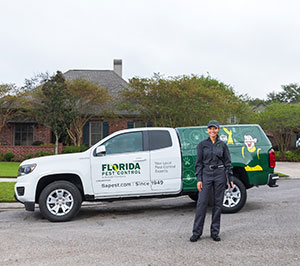Quality A1 Pest Control Services Charlotte - Protect Your Home
Wiki Article
Bed Pest Treatment Breakdown: Contrasting Chemical Vs. Non-Chemical Solutions
In the world of bug control, specifically when dealing with the consistent concern of bed insects, the selection between chemical and non-chemical therapy options can be an essential one. Both methods offer distinctive benefits and drawbacks, influencing factors such as performance, security factors to consider, and overall cost. By taking a look at the nuanced information of each technique, a more clear understanding of which course to pursue in dealing with a bed insect problem can be obtained.Efficiency of Chemical Treatments
Chemical treatments for bed pest infestations have been extensively recognized for their fast and potent efficacy in eliminating these bugs. When taking into consideration the effectiveness of chemical treatments, it is essential to recognize that they can offer a thorough and quick option to a bed pest issue.Furthermore, chemical therapies have the advantage of supplying residual effects, meaning that they can continue to get rid of bed bugs even after the first application. This residual activity is specifically beneficial in combating any possible re-infestations. Furthermore, the quick action of chemical therapies can bring relief to individuals facing severe bed bug invasions, permitting them to restore control of their space rapidly.
Safety Interest In Chemical Solutions
When using chemical solutions for bed pest therapy is making certain the security of residents and the environment,One critical element that needs cautious consideration. While chemical treatments can be effective in eradicating bed insects, they might pose dangers if not handled appropriately. Among the main security problems with chemical remedies is the potential damage they can trigger to human wellness. Direct exposure to particular chemicals utilized in bed bug therapies can cause breathing issues, skin irritability, or various other unfavorable responses, specifically in individuals with pre-existing conditions or sensitivities. In addition, improper application or dosage of chemical pesticides can cause toxic deposits sticking around in the treated location, posturing long-lasting health and wellness dangers to occupants.In addition, the environmental influence of chemical services is one more substantial consideration. Some chemicals used in bed pest therapies might be unsafe to advantageous insects, wild animals, and ecosystems if they seep right into the dirt or water supply. It is important to utilize chemical therapies carefully, adhering to safety and security guidelines, and thinking about much less hazardous alternatives to reduce these dangers and make certain the risk-free and reliable monitoring of bed bug invasions.
Advantages of Non-Chemical Techniques
Taking into consideration the potential security problems and ecological impact related to chemical remedies for bed pest treatment, exploring non-chemical techniques offers an encouraging choice with several distinctive advantages. Non-chemical approaches provide a safer choice for homes, particularly those with people, youngsters, or pets conscious extreme chemicals. These approaches eliminate the threats of exposure to toxic materials, lowering the possibility for damaging wellness results. Additionally, non-chemical treatments are ecologically pleasant, as they do not contribute to air or water pollution, making them a sustainable choice for parasite control.Additionally, non-chemical options can be rat control chemicals effective in targeting bed bugs, consisting of hard-to-reach locations where chemical therapies might not pass through. Techniques such as warmth treatment, vacuuming, heavy steam cleaning, and mattress encasements offer thorough obliteration without making use of dangerous chemicals. Furthermore, non-chemical methods can be less disruptive, requiring minimal prep work and permitting for quicker reentry into treated areas. On the whole, choosing non-chemical bed pest treatment techniques not only prioritizes security and ecological defense but likewise makes certain comprehensive and effective parasite control.
Limitations of Non-Chemical Treatments

Additionally, non-chemical treatments often require multiple applications to achieve effective removal. This can be time-consuming and may not constantly assure full elimination of all bed pests and their eggs, specifically in surprise or hard-to-reach places.
Additionally, the success of non-chemical treatments greatly relies upon appropriate implementation and thoroughness, which can be testing for individuals without professional proficiency. Inadequate application of non-chemical methods may cause incomplete eradication, causing consistent problems and the need for additional therapies.
For that webpage reason, while non-chemical therapies have their benefits, it is necessary to recognize these constraints and consider them when determining the most effective method for taking care of bed insect problems.
Expense Contrast: Chemical Vs. Non-Chemical Options
Given the restrictions associated with non-chemical treatments, an important facet to review in the context of bed pest monitoring is the cost contrast between chemical and non-chemical options. In contrast, non-chemical treatments like warmth therapy or vapor can be a lot more expensive, with expenses varying from $1,000 to $6,000 for a whole home. While the preliminary cost of chemical treatments might appear lower, numerous treatments may be required to fully get rid of the problem, possibly enhancing the total cost.Verdict

Considering the potential safety concerns and ecological influence associated with chemical services for bed bug therapy, discovering non-chemical techniques provides an appealing alternative with numerous distinct advantages.Given the limitations associated with non-chemical therapies, a vital element to review in the context of bed bug administration is the expense contrast in between chemical and non-chemical options. In contrast, non-chemical therapies like heat therapy or steam can be much more expensive, with costs ranging from $1,000 to $6,000 for an entire home. While the first price of chemical therapies might seem reduced, numerous therapies may be called for to completely eliminate the invasion, potentially raising the overall price.In conclusion, when contrasting chemical and non-chemical bed bug treatment options, it is essential to consider effectiveness, safety and security, benefits, restrictions, and cost.
Report this wiki page